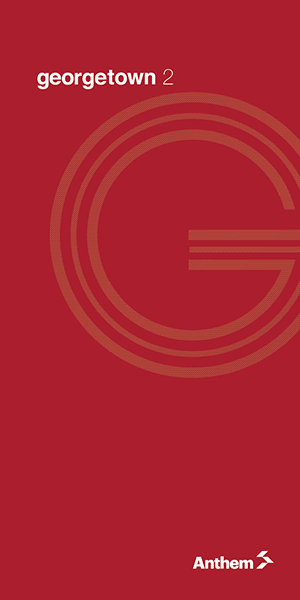 PROF. Mohan Singh Memorial Foundation of Canada commemorated the 100th “martyrdom” anniversary of Mewa Singh on January 11 in New Westminster.
PROF. Mohan Singh Memorial Foundation of Canada commemorated the 100th “martyrdom” anniversary of Mewa Singh on January 11 in New Westminster.
The commemoration took place at the old BC jail site located in New Westminister at 7:45 .am. -the same time as the execution of Mewa Singh 100 years ago.
Members of the Prof. Mohan Singh Memorial Foundation along with many prominent members of the community marked this important event in Canadian history. The commemoration began with a moment of silence to remember Mewa Singh and his contributions to the Ghadar movement and South Asian community.
Sahib Singh Thind, President of Prof. Mohan Singh Memorial Foundation, paid tribute and respect to Mewa Singh and pointed out that his “martyrdom” was part of the freedom struggle of the Ghadar movement. It was a chain of events in the 1913 and 1914 after Komagata Maru tragedy that finally resulted in Hopkinson’s killing and Mewa Singh’s “martyrdom.”
Thind demanded that the Canadian federal government remove Mewa Singh’s name “from any criminal reference in the legal system and Canadian historical texts.”
Prominent Ghadar movement historian Sohan Singh Pooni gave a detailed account of Mewa Singh’s life history and recounted the events leading to execution.
Dr. Major Singh Randhawa, Naveed Waraich, President of Pakistani Canadian Cultural Association, Ajay Kumar Vasudev, Sukhwinder Cheema, Rajinder Singh Bhela, Himat Singh Sandhu, Prof. Avtar Singh Virdi, Kultar Singh Thiara, Manjot Singh Samra, Rashpal Thind and other members of the community paid their tribute and respect to Mewa Singh’s contributions to the freedom movement and to the community.
The commemoration concluded with the same chants that members of the community gathered outside the jail 100 years ago chanted: “Shaheed Bhai Mewa Singh amar rahey.”
A few years ago, a spokesperson for the Khalsa Diwan Society New Westminster that had held a program to honour the legacy of Mewa Singh, gave the following account that was carried in this newspaper:
LEADING up to his execution were many different acts of injustice and harsh discrimination against the Sikhs. The song sung by most Canadians at the time was “White Canada Forever.” There were discriminatory acts by the government of the time such as the Election Act of March 1907, which deprived East Indians of the right to vote in provincial and municipal elections, the 1908 Act to ship Sikhs to British Honduras, the laws that prevented the children and wives of Sikhs from coming to Canada and then the unforgettable Komagata Maru incident in which fresh water and food was denied to the passengers and there were disastrous consequences for those sent back to India.
Amongst the local Sikhs a few spoke up against this injustice, and one of them was Mewa Singh, a simple but religious minded Sikh who was a reciter of the Guru Granth Sahib and came from the village of Lopoke, in Amritsar, India.
The last straw in these discriminatory incidents came on Sunday, September 6, 1914, when Bela Singh Jain, an informer and agent of Inspector William Hopkinson, pulled out two guns and started shooting at the Khalsa Diwan Society Gurdwara Sahib on West 2nd Avenue. He murdered Bhai Bhag Singh, President of the Society, and Battan Singh. Bela Singh was charged with murder, but Hopkinson decided to appear as a witness in his case and made up much of his testimony. Subsequently, Bela Singh was acquitted.
On October 21, 1914, Mewa Singh shot Hopkinson in the Assize court corridor with two revolvers because he believed him to be unscrupulous and corrupt, using informers to spy on Indian immigrants.
At the trial in the court of Judge Morrison, Wood, the attorney of Mewa Singh in his statement said, “The Sikh community felt that Hopkinson was in part responsible for the failure of the plans to land the Sikhs aboard the Komagata Maru. He was born in India (English father and East Indian mother). He could speak Indian languages fluently. He established a ring of informers to report about the activities of the Sikh community. Bela Singh Jain was his chief informer and an employee of Immigration department. He acted as a victorious lord over his community and was backed by his boss Hopkinson.”
Mewa Singh made a historical statement in the court: “My religion does not teach me to bear enmity with anybody, nor had I any enmity with Mr. Hopkinson. He was oppressing poor people very much. I, being a staunch Sikh, could no longer bear to see the wrong done both to my countrymen and Dominion of Canada. This is what led me to take Hopkinson’s life and sacrifice my own life. And I, performing the duty of a true Sikh and remembering the name of God, will proceed towards the scaffold with the same amount of pleasure as a hungry babe goes towards his mother. I am sure God will take me into His blissful arms.”
In addition, Mewa Singh also paraphrased the tenth Sikh Guru, Guru Gobind Singh Ji: “He is truly a hero who fights on the side of the weak, gets questered and cut limb by limb, but does not flee.”
On October 30, 1914, Mewa Singh was found guilty, and at 7.45 a.m. on January 11, 1915, in New Westminster, he became the first and the only Sikh to be executed in Canada. After his execution, his body was taken in a procession through the city by Sikhs and was cremated with great honor.












